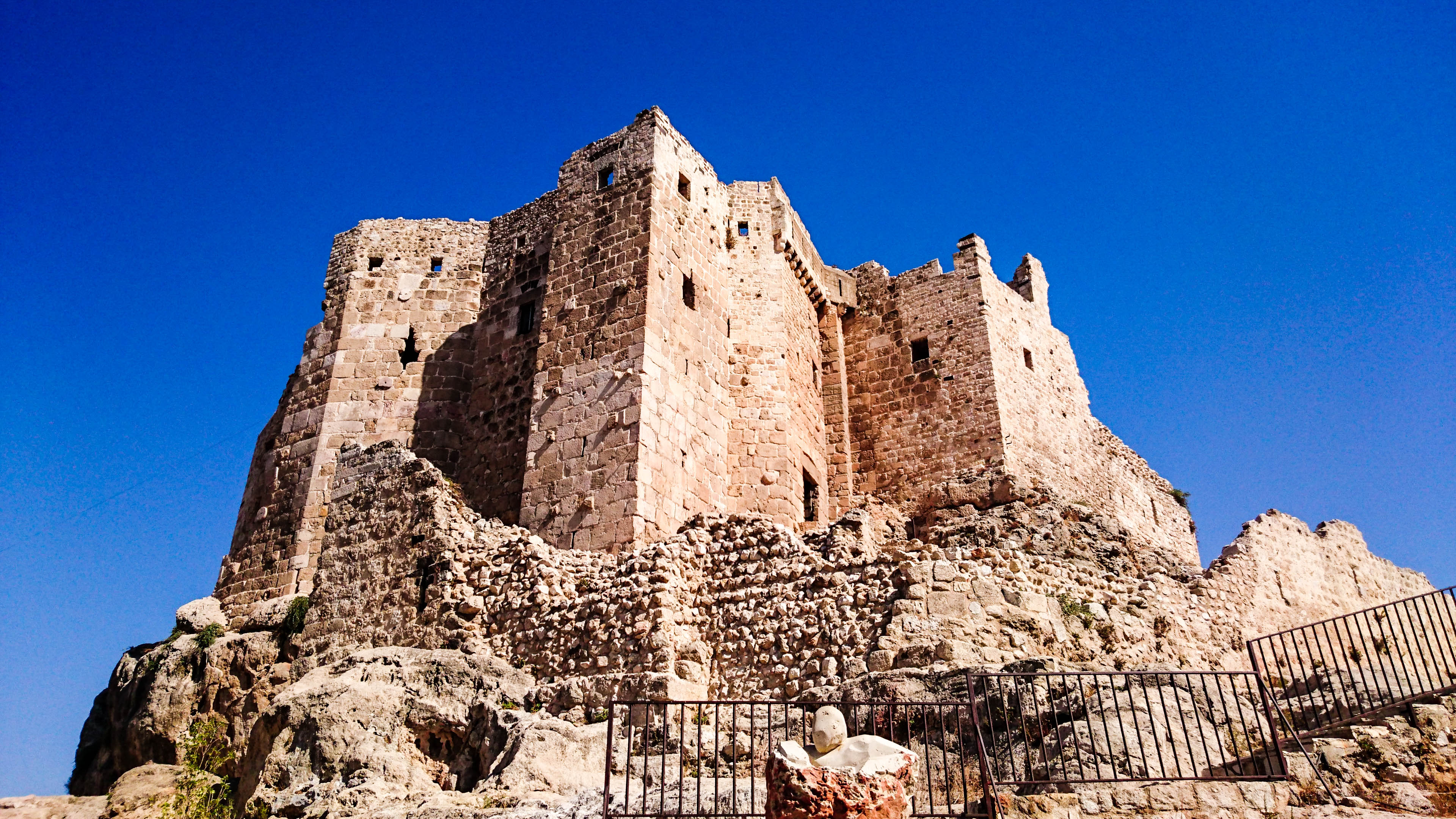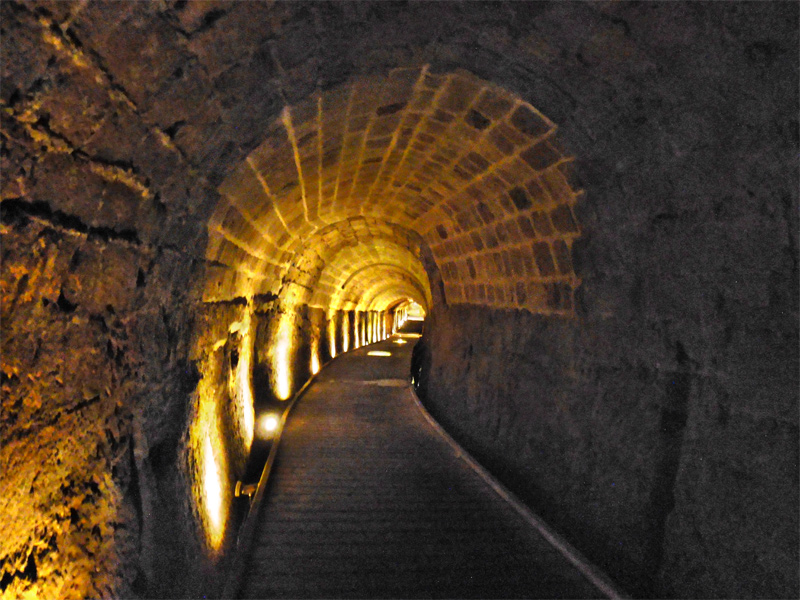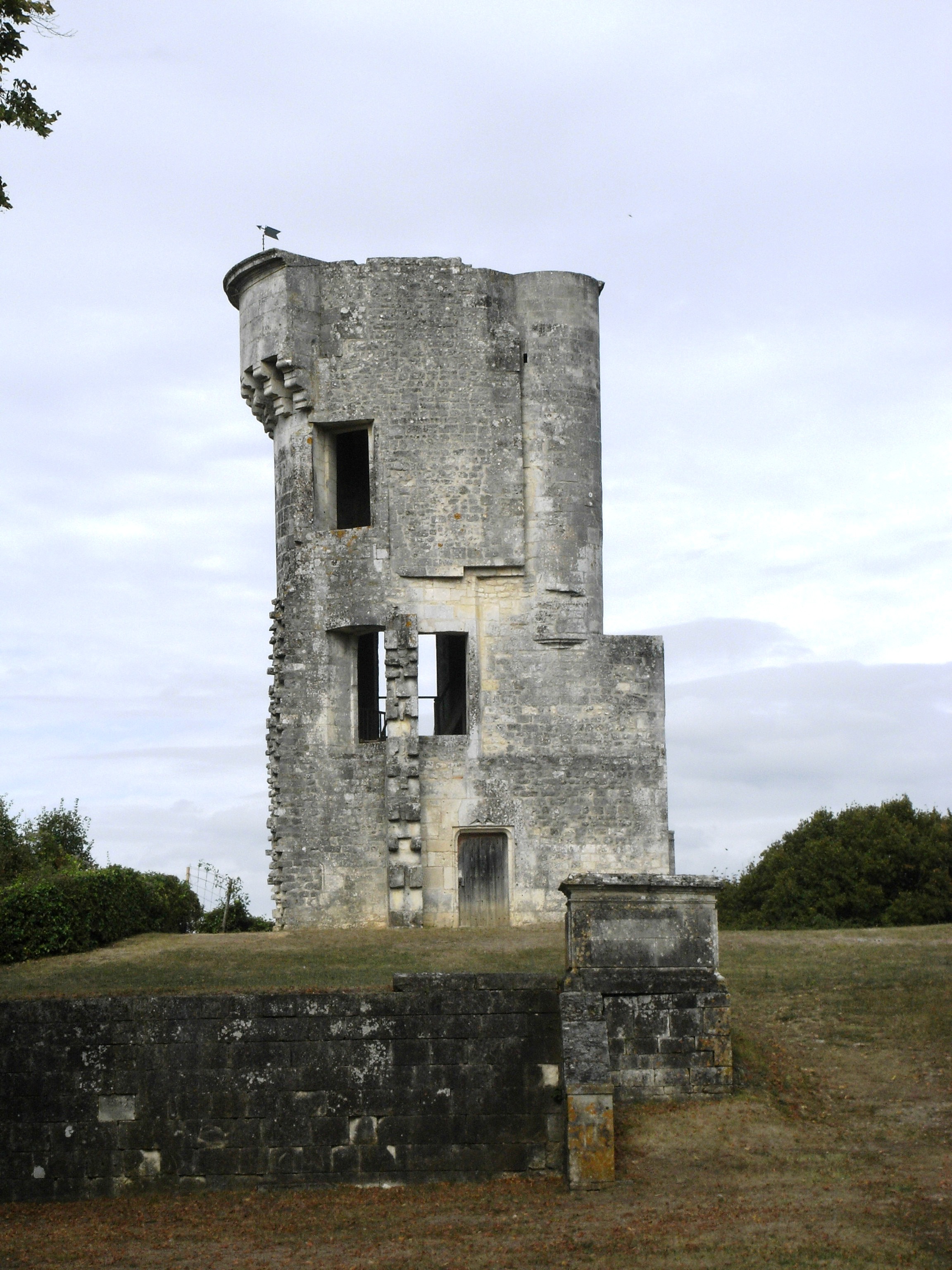|
Henry II, Count Of Champagne
Henry II of Champagne or Henry I of Jerusalem (29 July 1166 – 10 September 1197) was the count of Champagne from 1181 and the king of Jerusalem ''jure uxoris'' from his marriage to Queen Isabella I in 1192 until his death in 1197. Early life Henry was the elder son of Count Henry I of Champagne and Marie, daughter of King Louis VII of France and Duchess Eleanor of Aquitaine. His aunt Adela of Champagne was Louis VII's third wife. In 1171, Henry was betrothed to Isabella of Hainault. When she married Philip II of France instead, his father, aunt and other members of his family were angered. It made Queen Adela's faction hostile to Isabella's family and so caused tension at the French court. Henry's father died in 1181, and his mother ruled, as regent, until 1187. Crusade In 1190 Henry left for the East, after having his barons swear to recognize his younger brother Theobald as his successor should he fail to return. He joined the Third Crusade, arriving ahead of his u ... [...More Info...] [...Related Items...] OR: [Wikipedia] [Google] [Baidu] |
Count Of Champagne
The count of Champagne was the ruler of the County of Champagne from 950 to 1316. Champagne evolved from the County of Troyes in the late eleventh century and Hugh I was the first to officially use the title count of Champagne. Count Theobald IV of Champagne inherited the Kingdom of Navarre in 1234. His great-granddaughter Joan married King Philip IV of France. Upon Joan's death in 1305, their son Louis became the last independent count of Champagne, with the title merging into the royal domain upon his accession to the French throne in 1314. The titular counts of Champagne also inherited the post of seneschal of France. Counts and dukes of Champagne, Troyes, Meaux and Blois Dukes of Champagne In Merovingian and Carolingian times, several dukes of Champagne (or ''Campania'') are known. The duchy appears to have been created by combining the '' civitates'' of Rheims, Châlons-sur-Marne, Laon, and Troyes. In the late seventh and early eighth centuries, Champagne was contr ... [...More Info...] [...Related Items...] OR: [Wikipedia] [Google] [Baidu] |
Adela Of Champagne
Adela of Champagne (; – 4 June 1206), also known as Adelaide, Alix and Adela of Blois, was Queen of France as the third wife of Louis VII. She was regent of France from 1190 to 1191 while her son Philip II participated in the Third Crusade. Early life Adela was the third child and first daughter of Theobald II, Count of Champagne and Matilda of Carinthia, and had nine brothers and sisters. She was named after her paternal grandmother Adela of Normandy. When Louis VII's second wife, Constance of Castile, died in childbirth in 1160, he was devastated and became convinced that he would die young as well, fearing that the country would fall into chaos as he had no male heir. As he was desperate for a son, King Louis married 20-year-old Adela of Champagne five weeks later, on 13 November 1160. Adela's coronation was held the same day. She went on to give birth to Louis VII's only son, Philip II, and to the future Byzantine empress Agnes. Queenship The marriage between A ... [...More Info...] [...Related Items...] OR: [Wikipedia] [Google] [Baidu] |
Hashshashin
The Order of Assassins (; ) were a Nizari Isma'ili order that existed between 1090 and 1275 AD, founded by Hasan al-Sabbah. During that time, they lived in the mountains of Persia and the Levant, and held a strict subterfuge policy throughout the Middle East, posing a substantial strategic threat to Fatimid, Abbasid, and Seljuk authority, and killing several Christian leaders. Over the course of nearly 200 years, they killed hundreds who were considered enemies of the Nizari Isma'ili state. The modern term assassination is believed to stem from the tactics used by the Assassins. Contemporaneous historians include ibn al-Qalanisi, Ali ibn al-Athir, and Ata-Malik Juvayni. The former two referred to the Assassins as '' batiniyya'', an epithet widely accepted by Isma'ilis themselves. Overview The Assassins were founded by Hassan-i Sabbah. The state was formed in 1090 after the capture of Alamut Castle in the Alborz mountain range of Persia, which served as the Assassins' ... [...More Info...] [...Related Items...] OR: [Wikipedia] [Google] [Baidu] |
Tyre (Lebanon)
Tyre (; ; ; ; ) is a city in Lebanon, and one of the oldest continuously inhabited cities in the world. It was one of the earliest Phoenician metropolises and the legendary birthplace of Europa, her brothers Cadmus and Phoenix, and Carthage's founder Dido (Elissa). The city has many ancient sites, including the Tyre Hippodrome, and was added as a whole to the list of UNESCO World Heritage Sites in 1984. The historian Ernest Renan noted that "One can call Tyre a city of ruins, built out of ruins". Tyre is the fifth-largest city in Lebanon after Beirut, Tripoli, Sidon, and Baalbek. It is the capital of the Tyre District in the South Governorate. There were approximately 200,000 inhabitants in the Tyre urban area in 2016, including many refugees, as the city hosts three of the twelve Palestinian refugee camps in Lebanon: Burj El Shimali, El Buss, and Rashidieh. Territory Tyre juts out from the coast of the Mediterranean Sea, and is located about south of Beirut. ... [...More Info...] [...Related Items...] OR: [Wikipedia] [Google] [Baidu] |
Akko
Acre ( ), known in Hebrew as Akko (, ) and in Arabic as Akka (, ), is a city in the coastal plain region of the Northern District of Israel. The city occupies a strategic location, sitting in a natural harbour at the extremity of Haifa Bay on the coast of the Mediterranean's Levantine Sea."Old City of Acre." , World Heritage Center. World Heritage Convention. Web. 15 April 2013 Aside from coastal trading, it was an important waypoint on the region's coastal road and the road cutting inland along the Jezreel Valley. The first settlement d ... [...More Info...] [...Related Items...] OR: [Wikipedia] [Google] [Baidu] |
Baha Ad-Din Ibn Shaddad
Bahāʾ al-Dīn Abū al-Maḥāsin Yūsuf ibn Rāfiʿ ibn Tamīm (; the honorific title "Bahā' ad-Dīn" means "splendor of the faith"; sometimes known as Bohadin or Boha-Eddyn) (6 March 1145 – 8 November 1234) was a 12th-century Arabic jurist, scholar and historian notable for writing a biography of Saladin whom he knew well. Life Ibn Shaddad was born in Mosul on 10 Ramadan 539 AH (6 March 1145 CE), where he studied the Qur'an, ''hadith'', and Muslim law before moving to the Nizamiyya madrasa in Baghdad where he rapidly became ''mu'id'' ("assistant professor"). At an early age, Ibn Shaddad lost his father and he was raised by his maternal uncles the Banu Shaddad, from whom he got his name 'Ibn Shaddad'. About 1173, he returned to Mosul as ''mudarris'' ("professor"). In 1188, returning from ''Hajj'', ibn Shaddād was summoned by Saladin who had read and been impressed by his writings. He was "permanently enrolled" in the service of Saladin, who appointed him ''qadi al-'a ... [...More Info...] [...Related Items...] OR: [Wikipedia] [Google] [Baidu] |
Conrad Of Montferrat
Conrad of Montferrat (Italian language, Italian: ''Corrado del Monferrato''; Piedmontese language, Piedmontese: ''Conrà ëd Monfrà'') (c. 1146 – 28 April 1192) was a nobleman, one of the major participants in the Third Crusade. He was the ''de facto'' Kings of Jerusalem, King of Jerusalem (as Conrad I) by virtue of his marriage to Isabella I of Jerusalem from 24 November 1190, but officially elected only in 1192, days before his death. He was also the eighth List of rulers of Montferrat, Marquess of Montferrat from 1191. Early life Conrad was the second son of Marquess William V of Montferrat, "the Elder", and his wife Judith of Babenberg. He was a first cousin of Frederick I, Holy Roman Emperor, Frederick Barbarossa, Holy Roman Emperor, as well as Louis VII of France and Leopold V of Austria (Babenberg), Leopold V of Austria. Conrad was born in Montferrat, which is now a region of Piedmont, in northwest Italy; during the era in which he was born, it was a March of Montferra ... [...More Info...] [...Related Items...] OR: [Wikipedia] [Google] [Baidu] |
Humphrey IV Of Toron
Humphrey IV of Toron ( 1166 – 1198) was a leading baron in the Kingdom of Jerusalem. He inherited the Lordship of Toron from his grandfather, Humphrey II, in 1179. He was also heir to the Lordship of Oultrejourdan through his mother, Stephanie of Milly. In 1180, he renounced Toron on his engagement to Isabella, the half-sister of Baldwin IV of Jerusalem. The king, who had suffered from leprosy, allegedly wanted to prevent Humphrey from uniting two large fiefs. Humphrey married Isabella in Kerak Castle in autumn 1183. Saladin, the Ayyubbid sultan of Egypt and Syria, laid siege to Kerak during the wedding, but Baldwin IV and Raymond III of Tripoli relieved the fortress. Baldwin IV made his young nephew, Baldwin V, his successor before his death, but Baldwin V also died in the summer of 1186. The barons, who did not want to acknowledge the right of Baldwin V's mother, Sybilla, and her husband, Guy of Lusignan, to inherit the kingdom, decided to proclaim Humphrey and hi ... [...More Info...] [...Related Items...] OR: [Wikipedia] [Google] [Baidu] |
Siege Of Acre (1189–1191)
The siege of Acre was the first significant counterattack by Guy of Lusignan, Guy of Jerusalem against Saladin, leader of the Muslims in Ayyubid dynasty, Syria and Egypt. This pivotal siege formed part of what later became known as the Third Crusade. The siege lasted from August 1189 until July 1191, at which time the city's coastal position meant the attacking Latin forces were unable to fully capture the city and Saladin was unable to fully relieve it, with both sides receiving supplies and resources by sea. It concluded as a key victory for the Crusaders and a serious setback for Saladin's ambition to destroy the Crusader states. Background Egypt was ruled by the Shia Islam, Shi'ite Fatimid Caliphate, Fatimid dynasty from 969, independent from the Sunni Islam, Sunni Abbasid Caliphate, Abbasid rulers in Baghdad and with a rival Shi'ite caliph—that is ''successor'' to the Muslim prophet Muhammad. Governance fell to the caliph's chief administrator called the vizier. Fro ... [...More Info...] [...Related Items...] OR: [Wikipedia] [Google] [Baidu] |
Richard I Of England
Richard I (8 September 1157 – 6 April 1199), known as Richard the Lionheart or Richard Cœur de Lion () because of his reputation as a great military leader and warrior, was King of England from 1189 until his death in 1199. He also ruled as Duke of Normandy, Duke of Aquitaine, Aquitaine, and Duchy of Gascony, Gascony; Lord of Cyprus in the Middle Ages, Cyprus; Count of Poitiers, Counts and dukes of Anjou, Anjou, Count of Maine, Maine, and Count of Nantes, Nantes; and was overlord of Brittany at various times during the same period. He was the third of five sons of Henry II of England and Eleanor of Aquitaine and was therefore not expected to become king, but his two elder brothers predeceased their father. By the age of 16, Richard had taken command of his own army, putting down rebellions in Poitou against his father. Richard was an important Christian commander during the Third Crusade, leading the campaign after the departure of Philip II of France and achieving sev ... [...More Info...] [...Related Items...] OR: [Wikipedia] [Google] [Baidu] |
Third Crusade
The Third Crusade (1189–1192) was an attempt led by King Philip II of France, King Richard I of England and Emperor Frederick Barbarossa to reconquer the Holy Land following the capture of Jerusalem by the Ayyubid sultan Saladin in 1187. For this reason, the Third Crusade is also known as the Kings' Crusade. It was partially successful, recapturing the important cities of Acre and Jaffa, and reversing most of Saladin's conquests, but it failed to recapture Jerusalem, which was the major aim of the Crusade and its religious focus. After the failure of the Second Crusade of 1147–1149, the Zengid dynasty controlled a unified Syria and engaged in a conflict with the Fatimid rulers of Egypt. Saladin ultimately brought both the Egyptian and Syrian forces under his own control, and employed them to reduce the Crusader states and to recapture Jerusalem in 1187. Spurred by religious zeal, King Henry II of England and King Philip II of France (later known as "Philip Augustus") e ... [...More Info...] [...Related Items...] OR: [Wikipedia] [Google] [Baidu] |
Theobald III Of Champagne
Theobald III (; 13 May 1179 – 24 May 1201) was Count of Champagne from 1197 to his death. He was designated heir by his older brother Henry II when the latter went to the Holy Land on the Third Crusade, and succeeded him upon his death. He cooperated closely with his uncle and suzerain King Philip II of France. He died young, and was succeeded by a posthumous son, Theobald IV, while his widow, Blanche of Navarre, ruled as regent. Family Theobald III was the younger son of Count Henry I of Champagne and Marie of France. He succeeded as count of Champagne in 1197 upon the death of his older brother Henry II. Theobald married Blanche of Navarre on 1 July 1199 at Chartres. They had two children, a daughter, Marie, and a son, Theobald IV, born after Theobald III's death. Rule Charters were written by Theobald and King Philip II of France in September 1198 to dictate the rights of the Jews of the one ''vis-à-vis'' the other and to repay debts by Philip to the count of Champa ... [...More Info...] [...Related Items...] OR: [Wikipedia] [Google] [Baidu] |






